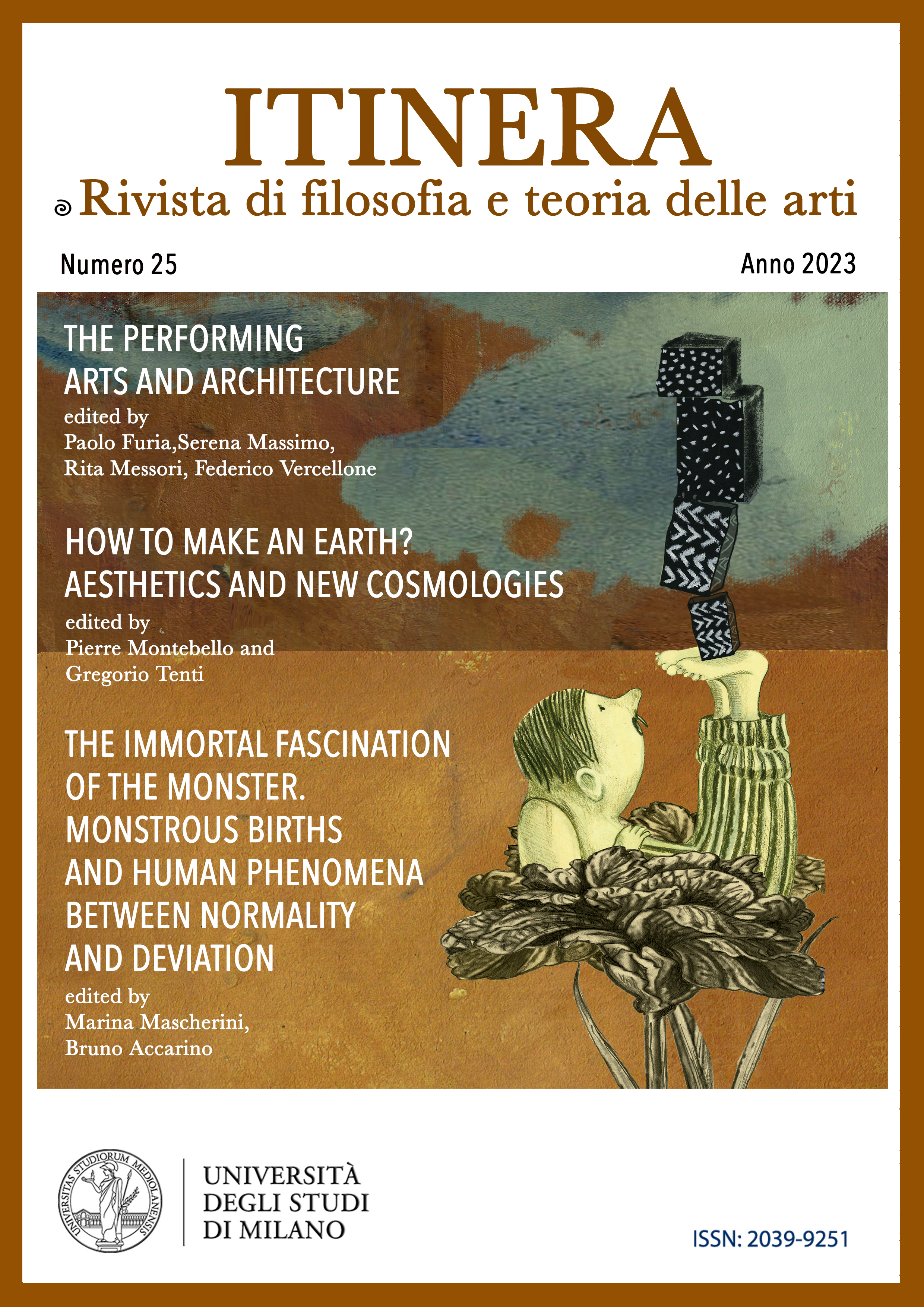The Chinese “Streetscape” Investigations on the performative destiny of a social and linguistic space
DOI:
https://doi.org/10.54103/2039-9251/20812Parole chiave:
Street, Urban Landscape, Chinese Language, Urban MorphologyAbstract
In Europe the street is traditionally the place of self-representation: the “Strada Nuova” in Genova has been designed in 1550 to allow noble families to build their own palaces in a competition of beauty, richness and power. In the American tradition the street became overall a place dominated by its market role (Venturi on Las Vegas, 1972). In China streets are the real public space for people’s daily life and its essential activities (trading, eating, playing, discussing): their role in urban life is so strong that sometime a street can appear even where the planning didn’t establish that.
The western main urban public/social space is the square, but for the eastern countries - especially China- the streets represent the most representative urban public space that can be used together without the class differences.
However, from the ancient cities to today’s high-density cities, the Chinese streets, because of their social role, have experienced also a very important connection with shop signs, posters, notices of all kinds, flags and signs, luminous writings. All these objects are a kind of ornament of daily-life as well as a real interesting documentary material, useful to understand permanencies and variations in the use of the cities during their transition from the former order to the new one.
The paper introduces the framework and the contents of a multidisciplinary research project at work, between urban morphology and Chinese language and culture. (max. 1500 characters, spaces included)
Riferimenti bibliografici
Anderson, S., On Streets. Streets as Elements of Urban Structure, MIT Press, Cambridge (Mass.) 1978.
CHEN, Fei, Thwaites, K., Chinese Urban Design. The Typomorphological Approach, Ashgate, Farnham Burlington 2013.
De Kloet, J., Scheen, L. (eds.), Spectacle and the City. Chinese Urbanities in Art and Popular Culture, Amsterdam University Press, Amsterdam 2013.
Dutton, M., Streetlife China, Cambridge University Press, Cambridge 1998.
Gabbiani, L. (ed.), Urban Life in China 15th-20th Centuries. Communities, Institutions, Representations, École Française d’Extrême-Orient, Paris 2016.
Hassenpflug, D., 城市. The Urban Code of China, Birkhäuser, Basel, 2010 (2008).
Janicot, É., La Typographie Chinoise, YOU Feng, Paris 2015.
JIANG, Shi, Street life and the people’s city, in “Architectural Design”, 78/5 (2008), monographic issue New urban China (edited by Laurence Liauw for John Wiley Press, London).
LI, S., Understanding the Chinese city, SAGE, London 2014.
LIU, D. (2014), 历代《清明上河图》(“Ancient ‘Qingming River’"), Tongji University Press, Shanghai 2014.
Madaro, F., Ta ma de e altre insolenze, Cafoscarina, Venezia, 1997.
Mehta, V., The street. A quintessential social public space, Routledge, London 2013.
Rowe, P. G., Forsyth, A., Kan, H. Y., China’s Urban Communities. Concepts, Contexts, and Well-Being, Birkhäuser, Basel 2016.
TIAN, Y., GU, K. and TAO, W. (eds.), Urban Morphology, Architectural Typology and Cities in Transition, Science Press Beijing, Beijing 2014.
Trisciuoglio, M., The ambiguity of identity, in Bao, L., Trisciuoglio, M., Jiang, L., Zhan, Y., Typological permanencies and urban permutations, design studio of re-generation in Hehuatang area, Nanjing [类型的恒在与城市的蜕变], Southeast University Press, Nanjing 2017.
Whitehand J.W.R., GU, K., Conzen, M.P., Whitehand, S.M., The typological process and the morphological period: a cross cultural assessment, in “Environment and Planning B: Planning and Design”, 41 (2014), pp. 512-533.
Venturi, R., Scott Brown, D., Izenour, S., Learning from Las Vegas, MIT Press, Cambridge (Mass.) 1972.
ZHANG, Y., Left street, life street. The social meaning of the street on Chinese urban space, PhD Master Thesis in Architecture Construction City at Politecnico di Torino (tutor M. Trisciuoglio), 2018.
Dowloads
Pubblicato
Fascicolo
Sezione
Licenza
Copyright (c) 2023 Marco Trisciuoglio, Federico Madaro

Questo lavoro è fornito con la licenza Creative Commons Attribuzione - Condividi allo stesso modo 4.0.
Gli autori che pubblicano su questa rivista accettano le seguenti condizioni:
1. Gli autori mantengono i diritti sulla loro opera e cedono alla rivista il diritto di prima pubblicazione dell'opera, contemporaneamente licenziata sotto una Licenza Creative Commons - Attribuzione - Condividi allo stesso modo 4.0 internazionale che permette ad altri di condividere l'opera indicando la paternità intellettuale e la prima pubblicazione su questa rivista.
2. Gli autori possono aderire ad altri accordi di licenza non esclusiva per la distribuzione della versione dell'opera pubblicata (es. depositarla in un archivio istituzionale o pubblicarla in una monografia), a patto di indicare che la prima pubblicazione è avvenuta su questa rivista.
3. Gli autori possono diffondere la loro opera online (es. in repository istituzionali o nel loro sito web) prima e durante il processo di submission, poiché può portare a scambi produttivi e aumentare le citazioni dell'opera pubblicata (Vedi The Effect of Open Access).





